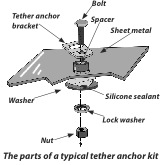SRN recently heard from Carma McKinnon, Idaho’s CPS coordinator located at Lemhi County Sheriff’s Department, regarding concerns over ATVs and UTVs. ATVs (all-terrain vehicles, aka quads) and UTVs (utility-task vehicles, aka side-by-sides, recreational off-road vehicles, or ROVs) are used by families across the country for both recreation and work purposes, but can be extremely dangerous to children.
McKinnon noted that ATVs and UTVs are very popular in her state, and this seems to be the case across the country, with the largest sales volumes found in rural areas, especially in the South and Midwest. Sales have grown substantially over the past 10 years. Based on data from the Motorcycle Industry Council and the Specialty Equipment Market Association, roughly 250,000 ATVs are sold in the U.S. each year. Sales of UTVs have been even hotter; this newer market entry has surpassed ATVs in sales, with around 400,000 currently sold per year. Sales of these vehicles fluctuate with the strength of the economy, so they may vary widely from year to year.
Read More from “Off-Road Vehicles Pose a Big Risk for Kids”




 Safe Kids provides a multitude of resources to assist local programs
Safe Kids provides a multitude of resources to assist local programs